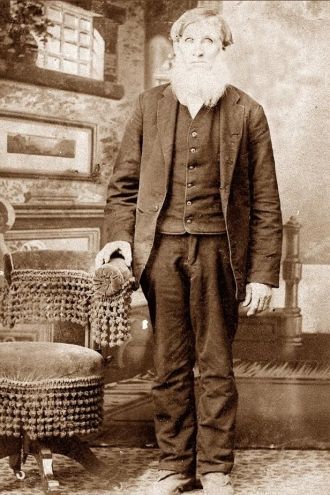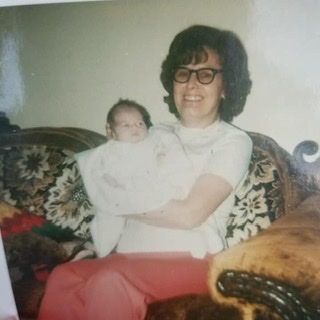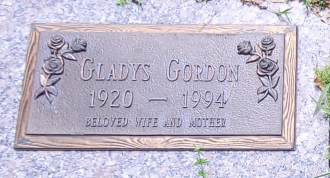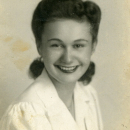Gordon Family History & Genealogy
Gordon Last Name History & Origin
AddHistory
We don't have any information on the history of the Gordon name. Have information to share?
Name Origin
We don't have any information on the origins of the Gordon name. Have information to share?
Spellings & Pronunciations
We don't have any alternate spellings or pronunciation information on the Gordon name. Have information to share?
Nationality & Ethnicity
We don't have any information on the nationality / ethnicity of the Gordon name. Have information to share?
Famous People named Gordon
Are there famous people from the Gordon family? Share their story.
Early Gordons
These are the earliest records we have of the Gordon family.


Gordon Family Members
Gordon Family Photos
Discover Gordon family photos shared by the community. These photos contain people and places related to the Gordon last name.










On Major Gordon's left arm, we see his Belgian Royal Brassard.


Captain 6th August 1900. Major 7th January 1905 Major, Brigade Major, 1st Lothian Volunteer Infantry Brigade, 1905. Resigned his commission on 26th May 1906.
Gordon Family Tree
Discover the most common names, oldest records and life expectancy of people with the last name Gordon.
Updated Gordon Biographies






Popular Gordon Biographies


























Gordon Death Records & Life Expectancy
The average age of a Gordon family member is 73.0 years old according to our database of 59,340 people with the last name Gordon that have a birth and death date listed.
Life Expectancy
Oldest Gordons
These are the longest-lived members of the Gordon family on AncientFaces.
Other Gordon Records
Share memories about your Gordon family
Leave comments and ask questions related to the Gordon family.
Rev. Gordon Crompton, ThD, ThM, M.A.,B.A.
Alson Gordon was the son of Samuel Gordon, immigrant from Aberdeenshire, (or Banffshire) Scotland. Samuel listed his birth date as 1783, and his arrival date to America as 1 October 1792, when applying for citizenship in Chester County South Carolina, 29 October 1810. He had been a stonemason before this date, and had worked on the bridge built on Callahan Mountain, known as the Poinsett Bridge. Sometime in the early 1820’s, Samuel married the daughter of Benjamin Staton, Mary, who was born in 1786. This couple raised seven children: Alson, the eldest was born about 1823, followed by Benjamin, Louisa, Samuel Jr., and James. About 1844, Alson married Nancy Cooper (1825-1858), and they settled down in Greenville County, South Carolina. Here, their first three children were born: Mary Margaret, 1845; John C., 1847; and my Great Grandfather; Benjamin Franklin Gordon was born in 1849.
Sometime around 1850, Alson and his family moved to the Forks of Pigeon, Haywood County, North Carolina. Here he would gain two more children, but lose a wife. Martha Melvina was born in 1853, and Nancy L. was born in 1858, at which time her mother died. Nancy Cooper Gordon is buried in the Green Hill Cemetery in Haywood County.
The following year, Alson married a mother for his small children, and this union would produce 11 more children over the years to come. Two would be born before his first enlistment in the army: William Pinckney, 1 December 1859, and Sarah Elizabeth, 25 December 1860. When this youngest girl was about six months old, her father would leave for the military of a newly formed nation: the Confederate States of America.
The news of the fall of Ft. Sumter in April 1861 caused President Abraham Lincoln to call on the Sovereign state of North Carolina for troops to put down a “rebellion”. This led to the secession of the Tar Heel State 20 May, her joining of the Confederacy, and the call of the Provisional government for volunteer soldiers to defend the new nation from the aggressive Northern government. Thomas Lenoir of Haywood County was busy attempting to raise a company of volunteers for the N.C. Infantry, and he signed Alson on. The enlistment period was one year, beginning on 29 June 1861. He was described by his recruiter on official documents as being 5 feet, 11 inches of height, of fair complexion, light hair and blue eyes.
Since May, newly formed companies had been assembling at Camp Patton, in Asheville, N.C. (near present day Merrimon Ave.) awaiting formation into a regiment. By early August the required ten companies had gathered and held elections for officers on the fifteenth. The following regimental officers were elected: Former N.C. Senator Thomas L. Clingman of Buncombe County was elected Colonel; Regular Army officer St.Clair Dearing, Lt.Colonel; Henry Rutledge, Major; Basil Edmonston, adjutant; W.H.Bryson of Haywood, Quartermaster; John W. Walker, Commissary; as Surgeon, Dr. S.S. Satchwell and Dr. S.W. Fletcher as assistant; J.C.L. Gudger as Sergeant-Major; Clinton A. Jones as Quartermaster Sergeant; Julius M. Young as Commissary Sergeant; A. J. Herring as Ordinance Sergeant; and Peter M. Rich as Drum Major.
The ten companies and their commanders were: A, from Henderson Co., Captain Baylis Edney. B, from Jackson Co., Cpt. Thaddeus D.Bryson. C, from Haywood Co., Cpt. Samuel C. Bryson. D, from Cherokee Co., Cpt. John W. Francis. E, from Transylvania Co., Cpt. Francis W. Johnston. F, from Haywood Co., Cpt. Thomas I.Lenoir. G, from Clay and Macon Counties, and Athens, Georgia, Cpt. William S. Grady. H, from Buncombe and Henderson Counties, Cpt. Fredrick Blake (of Henderson). I, from Buncombe Co., Cpt. George W. Howell. K, from Buncombe Co., Cpt.Charles M. Roberts.
The regiment was organized as the 25th N.C. Infantry Regiment, and Alson’s company was Company F. They all anxiously awaited their marching orders at Camp Patton until they arrived. Departure was 18 Sept 1861, when they marched for the nearest railroad at Icard Station below Morganton. From there, they were moved by rail to Raleigh, where they drew uniforms, shoes and other supplies. They were then sent by rail to Wilmington, and marched to Mitchell’s Sound, where Camp Davis was located, arriving 29 September. This became their training station, and here they were issued their weapons and field equipment. (Pay issued 8-31 and 10-31)
In November, the regiment was ordered into South Carolina, and they set up winter quarters at Grahamville for picket duty. In the late winter, New Berne, N.C. came under attack, and the 25th was sent there as relief, but they arrived 14 March 1862, after the town was captured by the Union. They made their rendezvous with the retreating Confederate forces at Kinston, N.C. and made camp there.
Here in Kinston, a major re-organization of the 25th took place. Colonel Clingman was promoted to Brigadier General, and the regiment was assigned to General Robert Ransom’s Brigade along with the 24th, 26th, 35th, and 49th N.C. regiments. In the 25th, officer elections were again held. Major Rutledge became Colonel, and upon this, Lt. Colonel Dearing resigned. (He was enraged that he, a professional soldier was not elected, and thus, would be subordinate to a civilian.) Captain Thaddeus Bryson of Company B was elected Lt. Colonel, and Captain J.W. Francis of Company D replaced Rutledge as Major. ( Co.D was taken over by Lt.Lee B. Trantham.)
Ransom’s Brigade was ordered to Richmond, Virginia to be made a part of Gen. Robert E. Lee’s Army of Northern Virginia, and placed under the command of Gen. John B. Magruder; M. Gen. Theophilus Holmes Division, arriving on 24 June 1862. On the following day, Holmes Division, along with the division of M.Gen. Ben Huger, engaged the enemy at the Battle of Seven Pines. The 25th had 2 killed and 40 wounded; fairly light casualties, but it was their first major fight. They again fought at Malvern Hill on 2 July 1862, where their casualties were also light, 93 killed and wounded.
After these days of harsh fighting, the division was removed to Drewry’s Bluff outside Richmond and made camp. But here they encountered a more formidable enemy than the Federals: measles. Eighty-one men would die during this time. It is not known whether this malady affected Alson or not, but on 16 July, his enlistment came to an end. The Conscript Act, which was passed to require all white males ages 18-35 to serve for the duration of the war; could not keep him; for Alson was 36 years of age.
On that day, Alson packed his meager belongings and reported to Company F Headquarters, where Lt. Blalock filled out his discharge papers, of which there is a copy extant. He had drawn pay 31 December, and 30 April; thus was paid by final statement for 1 May-16 July. Plus, he drew 10 cents per mile for the part of the trip that the railway could not carry him. It was 90 miles from Icard Station to Forks of Pigeon, which totalled $9; added to his two month, sixteen day pay the grand total pay was $27.86. He was given his rail ticket to take him from Camp Dray, Drewry’s Bluff, Va. to Icard, N.C. and his military career ended. For a time, at least. Alson was back home in Haywood County with his family before cold weather, 1862. And we do not know whether he knew it or not, but the 25th was back in the state then by the winter, setting up camp at Garrysburg.
It is not clear if things were difficult on the farm, or if the next spring’s crop was not up to par, if the boys were handling the farm well, or all of the above. Or perhaps, Alson was just more of a patriot for North Carolina than we know; but he would soon be back with his regiment. By 1863, the citizens of Madison County N.C. were being plagued with a new kind of enemy; hun
Followers & Sources
































